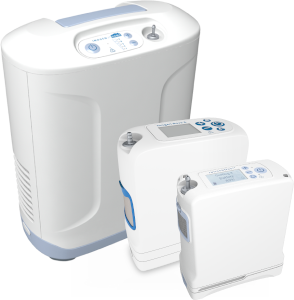
Trans-tracheal oxygen delivery
Transtracheal oxygen therapy (TTOT) is the administration of oxygen directly into the trachea via a small, flexible, plastic catheter. It is intended only for patients requiring long-term, continuous oxygen therapy and is a scientifically validated alternative to oxygen delivered by nasal prongs.[2] This is a very simple procedure in which a small opening is made in the neck and a catheter is placed through the opening and directly into your trachea (windpipe), and is attached to an oxygen delivery device to feed oxygen directly to your lungs. The opening in the neck is very small and can often be hidden with clothing, thereby being much less noticeable than the traditional cannula.
Lung Volume Reduction Surgery (LVRS)
Lung volume reduction surgery is a procedure to help people with severe emphysema affecting the upper lung lobes. LVRS is not a cure for COPD but can improve one’s exercise capacity and quality of life. The goal of the surgery is to reduce the size of the lungs by removing about 30 percent of the most diseased lung tissues so that the remaining healthier portion can perform better. LVRS also can allow the diaphragm to return to its normal shape, helping you breathe more efficiently. The surgery has been shown to help improve breathing ability, lung capacity and overall quality of life among those who qualify for it.[1]
Bullectomy
Bullectomy is a procedure where doctors remove one or more of the very large bullae or blebs from the lungs. Bullae are large air sacs that form from hundreds of destroyed alveoli. These air spaces can become so large that they crowd out the better functioning lung and interfere with breathing. For those people, removing the destroyed air sacs improves breathing.[1]
Lung Transplantation
Lung transplantation is not an option for everyone; beyond the difficulty of the procedure, waiting for a donor, and hoping that your body won’t reject the new tissue, it is also not for people with other systemic health issues or infections. Lung transplants can improve your ability to breathe and be active. However, like any major operation, you should consider the risks and complications, such as organ rejection or needing to take immune-suppressing medications daily.[1]
REFERENCES
- Surgery for COPD | American Lung Association
- Transtracheal Oxygen Therapy: The Best-Kept Secret in Medicine? Aug 6, 2008, https://rtmagazine.com/department-management/clinical/transtracheal-oxygen-therapy-the-best-kept-secret-in-medicine/









